At the start of August, ten sixth form students from schools across the UK visited Cambridge Earth Sciences as part of a summer school programme aimed at widening participation to top universities. Having myself graduated from the University in June, I was thrilled to come back to the Department and give the students an insight into studying Earth Sciences at Cambridge.
On their first day, the students were given a whistle-stop tour of the Earth Sciences tripos (from climate to sedimentology to petrology) by Professor Ed Tipper, before looking at thin sections under the microscope. Many of the students had heard of granite, but none were familiar with the minerals that constitute igneous rocks, and I think it’s fair to say they were impressed by the range of colours seen under the microscope!
After a quick lunch break, Sedgwick Museum Director Dr Liz Hide gave us a tour of the urban geology on our doorstep, pointing out the diverse building stones around Cambridge. This was a fantastic opportunity for the students to practice their observational skills within a 5 minutes’ walk of the Department. The ammonites and belemnites in the Grand Arcade were a star attraction, much to the bewilderment of security staff at the shopping centre! A tour of the Sedgwick Museum’s rich collections, led by the Museum’s Exhibitions and Displays Coordinator Rob Theodore, rounded off a jam-packed first day.

On Wednesday, lectures from Professor Sanne Cottaar and Dr Max Van Wyk De Vries showcased the varied research in the Department and had the students answering questions such as: ‘what does a Taylor Swift concert look like on a seismometer?’ and ‘how many volcanic eruptions would be needed to melt the Antarctic ice sheet?’.
An Earth Sciences taster week wouldn’t be complete without a field trip—in our case, an excursion to Fen Ditton on Wednesday afternoon to investigate changes in the chemistry of the River Cam. The students used handheld probes to analyse river pH and dissolved load upstream, and the results (which the students logged on a map in real-time using their phones) prompted discussion on what might impact water quality in Cambridge.


On Thursday we embarked on a different excursion, this time to West Cambridge. First, we visited the Sedgwick Museum’s Collections Research Centre, where students got to explore the Museum’s extensive behind-the-scenes store of fossils, rocks minerals, archived work and more.
Next, we walked over to the Bullard Laboratories for seminars from Professor Rich Harrison and Dr Craig Walton, where we pondered some big-picture questions such as how Earth formed, how it got its magnetic field and how life started on our planet.
As this was the coldest day of the week, it seemed appropriate that we then visited the British Antarctic Survey to learn about ice core science. Dr Thomas Bauska and Dr Rachael Rhodes gave us a tour, showing us analytical equipment that measures the trace gases within air bubbles trapped in drilled ice. We even got to hold some authentic Antarctic ice and hear it ‘pop’ as the ancient air bubbles melted!
Finally, it was the students turn to plan an excursion to drill the next Antarctic ice core. We learnt how drill sites are chosen and found out that some of the students couldn’t live without tea, fresh fruit or ice cream.

On the final day, we visited the Zoology Museum, where PhD student Grace Kinney Broderick guided us through the collections and the evolution of life. A work-sheet exercise had the students’ spotting differences in vertebrates over millions of years, with highlights including the preserved lungfish and a giant Megatherium skeleton! To finish the week, we saw some living organisms—corals growing in controlled conditions in Dr Oscar Branson’s lab in Cambridge. The session, led by PhD students Madi East and Alice Ball, even gave students a chance to make their own coral reef from FIMO modelling clay!


It was good to see the full scope of Earth Sciences on display over the week, and lots of positive feedback made it clear that fun was had by all!



